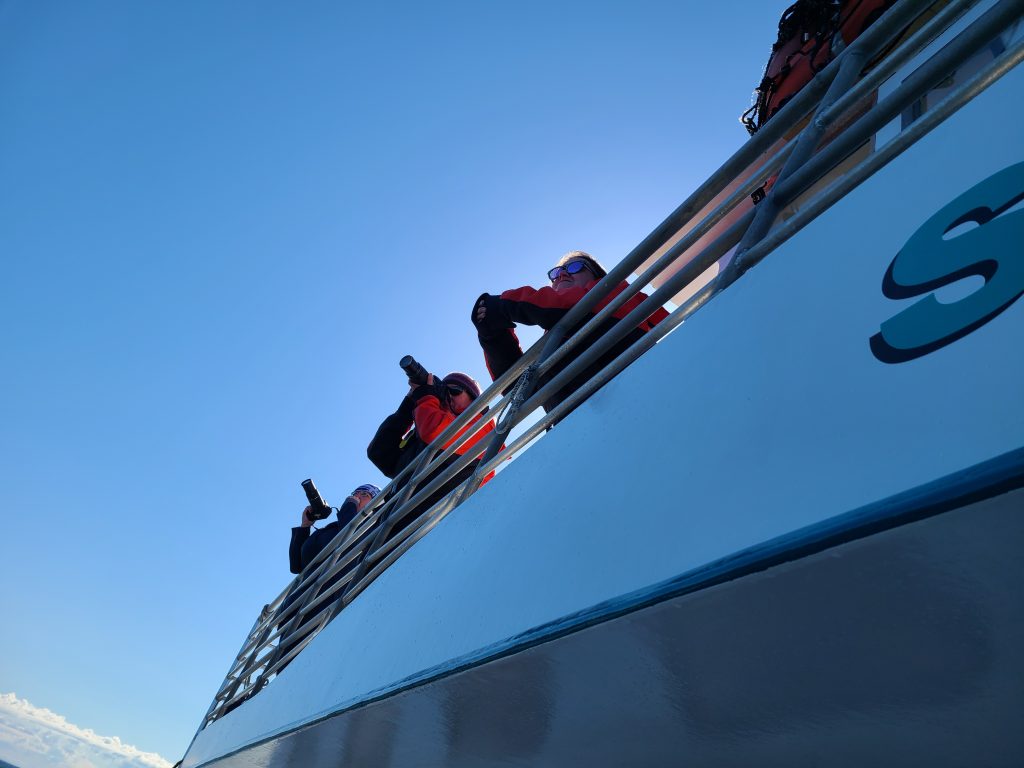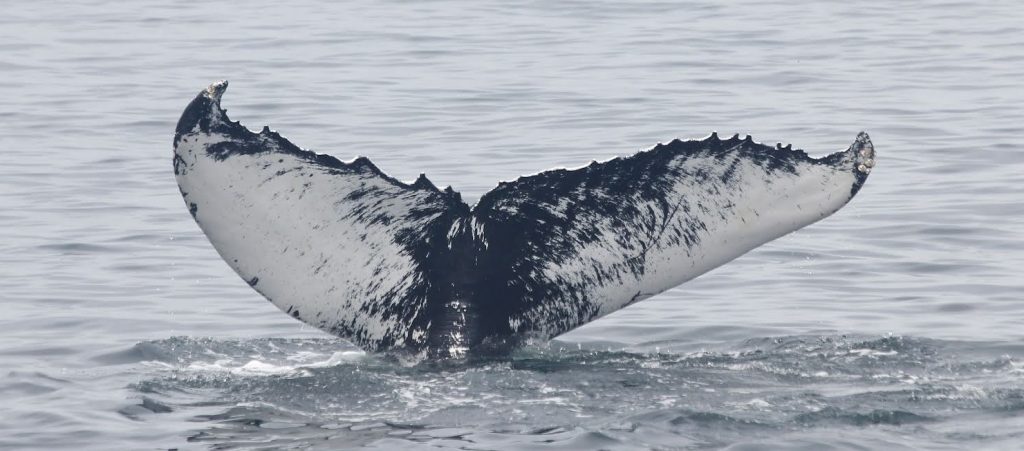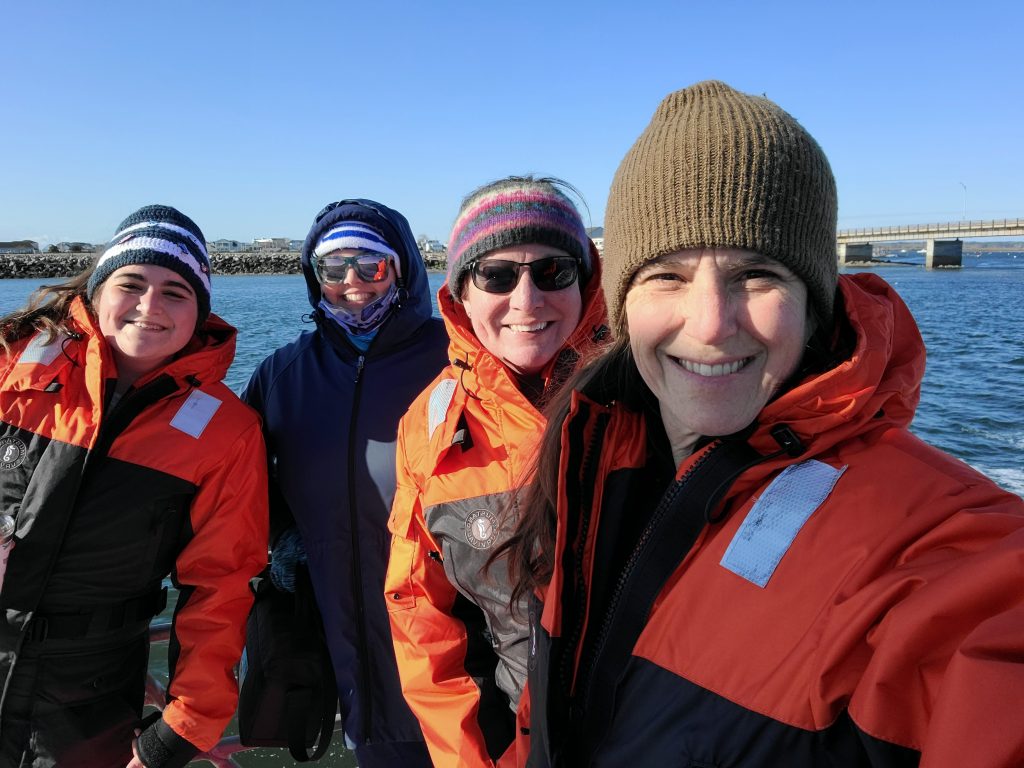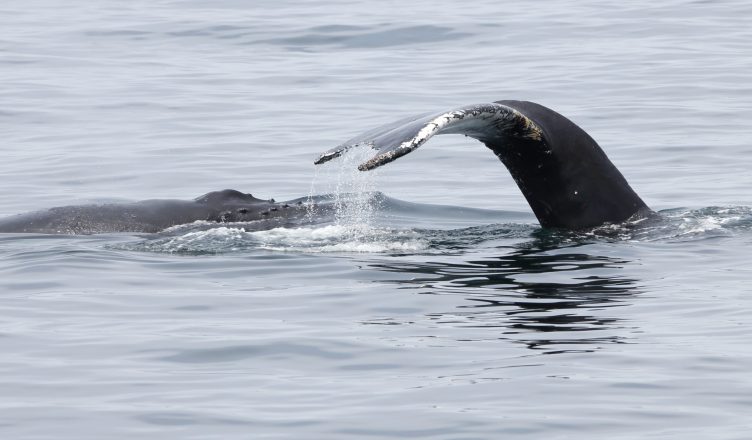It’s early in the morning in mid-March. My phone makes that chirping sound that means someone wants to talk to me. The text reads, “Hey, I’m seeing a few whales out here. They are slapping their tails a lot. What kind are they?” The text is from a friend who works on a fishing boat. The picture attached is of a humpback whale. It makes me wonder what else is out there this time of year, months before the start of the commercial whale watching season.
Do We See Whales in the Off-Season?
During the months when the whale watching boats aren’t running, we know there are still whales around. We get occasional reports from fishing boats, and NOAA conducts a few aerial surveys, but it is tough to get a real sense of what is out there in terms of species, numbers, and individuals with the limited effort.
Spring Whale Survey
We decide that it is time to charter a boat to take us out to Jeffreys Ledge in April and early May to have a look for ourselves. As luck would have it, a friend of ours who used to captain a whale-watching boat just bought his own boat, the Seacoast Lady, for fishing trips and agreed to take us out looking for whales! Well, that was easier said than done. It turns out that the weather isn’t always cooperative this time of year, and several of our four scheduled days needed to be rescheduled. However, all four ended up taking place before the start of our whale watching season with Granite State Whale Watch, so we’ll take that as a win.

Whale Survey Findings
All in all, we found 23 different humpback whales, including two mother/calf pairs, four fin whales, four North Atlantic right whales, and six minke whales. Multiple pods of harbor porpoises were seen as well as plenty of harbor and grey seals!
Right Whale Sighting Triggers Protection Action
We reported the sightings of right whales to NOAA, which triggered a voluntary speed reduction for boats over 65 feet in length. Leading causes of right whale mortality include ship strikes and entanglement. Slowing ships down has been reported to reduce the chance of mortality if a ship strike occurs. With only 336 right whales in the population, every element of protection helps their survival.
Unique Humpback Whale Sightings
The majority of the humpback whales identified on these trips had not been reported by other groups yet this year (from surveys and early whale watching trips from Boston and Gloucester), and many of them were not regulars to the Jeffreys Ledge area! We saw the humpback named Quote with a new calf which is interesting since she was seen often last summer and even breached several times while she was apparently pregnant!

Jeffreys Ledge is An Important Habitat
All these early sightings bring new light to the importance of the Jeffreys Ledge area as a feeding habitat for whales returning from their wintering grounds (where they don’t feed for several months). The right whale sightings also may indicate new habitat usage for this species as they historically have not been recorded in this area during this time of year.
We hope to continue looking for whales in the off-season to learn more about their habitat use and behaviors year-round! The mysteries of whales are slowly being uncovered, but climate change impacts when and where whales will appear. We are seeking funding to continue these off-season scouting trips (fall, winter, and early spring) to get a better sense of where whales are located and the threats they face when regular surveillance is sparse. Will you help?
Learn More:
- Our Whale Research Program
- 2021 Research Report (PDF file)
- Support Our Whale Research
- More About Right Whales
Thank you to The Seacoast Lady, The Perkin Fund, Mysticetus, and private donors for supporting our spring surveys.







